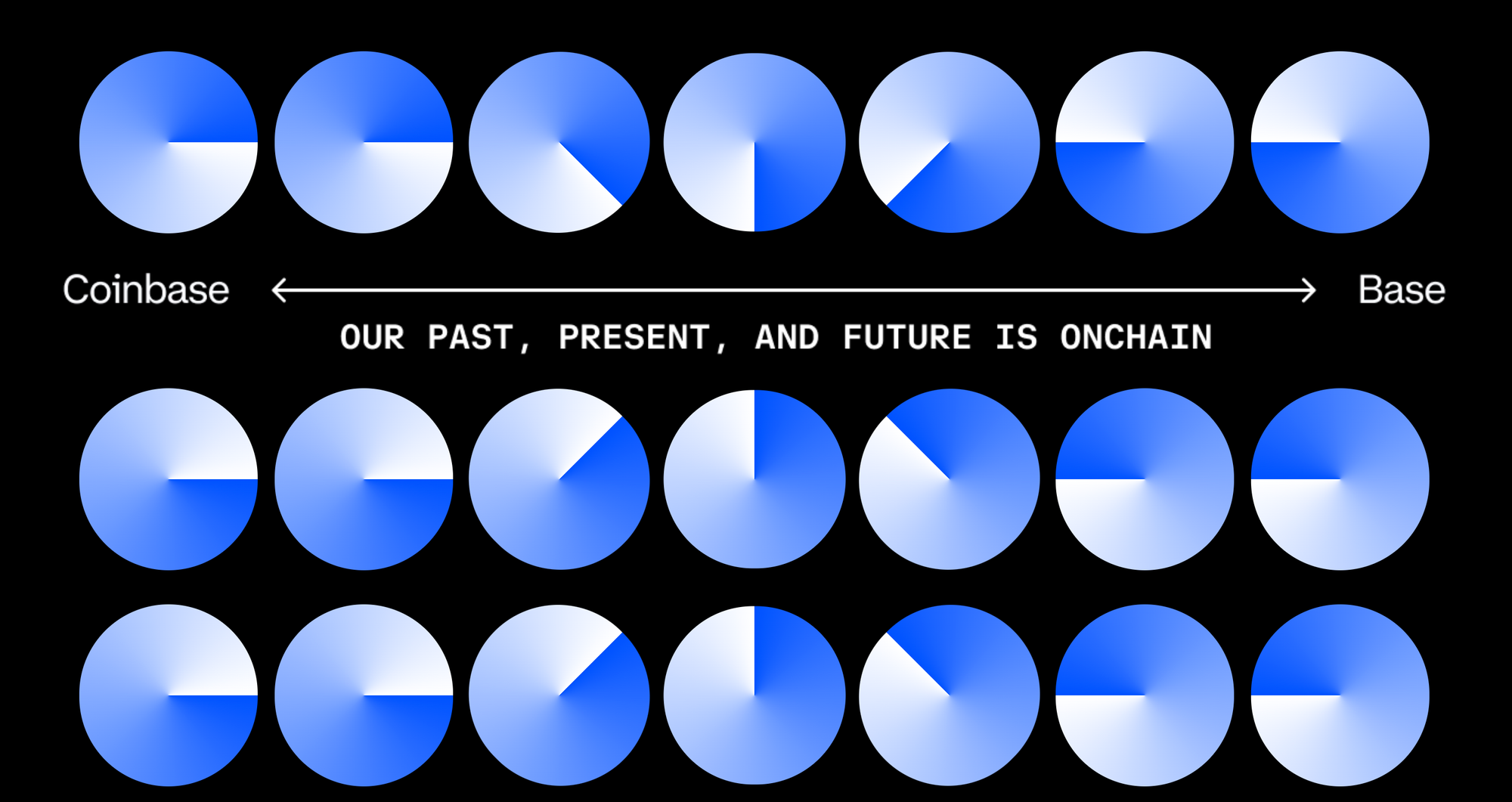Base Coinbase <> onchain crypto
Base from Coinbase is a scaling tech stack designed specifically to make it easier to get more people onchain. Base is helping drive down onchain transaction costs and makes it easy to spin up new blockchain-based apps and services.

The world is moving onchain — and fast.
A crop of new projects aimed at scaling the speed and ease of blockchain-based transactions is making the migration onchain possible. A project called Base is quickly becoming a major player within this emerging space of scaling tech.
Base is an interesting project on many levels — and we’ll dive into some of that in this post. One thing worth mentioning right from the start: Base is a project incubated and launched by Coinbase.
Coinbase is headquartered in San Francisco and is one of the oldest crypto exchanges. It’s a publicly-traded company and besides providing a lot of retail crypto services (an exchange, wallet, and trading platform) the company is also one of the largest custodians for major institutional players.
The institutional side of the business is growing rapidly because of the recent approval of Bitcoin ETFs. Coinbase also has a venture arm, which supports younger companies building crypto and DeFi-related products.
Base launched in 2023, and has been growing steadily since in terms of active users, developer activity, and just overall profile.
First, some context
In the recent past, most of the crypto/DeFi/web3 world focused on how to move money between fiat currencies (traditional dollars or euros, for example) and crypto.
The industry centered around big names and companies and exchanged-based products drove most market activity.
During the last bull market, some blips began appearing on the horizon. Demand for services like decentralized finance, or digital collectibles (NFTs), got traction. Connecting to decentralized apps with a web3 wallet became a thing — the beginnings of a sea change. The world started to move onchain.
Web3 and onchain are used synonymously at this point. Onchain, for this post, means interacting with apps and services that are blockchain-based (that’s where the onchain comes from).
The underlying advantage of operating onchain is security and control. The main portal to onchain is connecting a web3 wallet. In some ways, this works like “sign-in with Google” or something similar in web2. But it’s better. You don’t have to give up critical information and you maintain control over your data. Onchain is a whole new paradigm and it puts the user first.
Then came the roadblocks, or at least some speed bumps along the transition to onchain. One of the biggest so far is that the infrastructure for developers interested in building new kinds of apps and services was all over the place — and the fees associated with basic onchain transactions were high.
At least that was the case until very recently (like last week). The latest upgrade to Ethereum makes it more efficient for developers to build tech stacks on top of blockchain specifically designed to help get more people onchain through infrastructure upgrades that make blockchain-based transactions faster and cheaper.

Check out this piece for more context on the blob situation.
All of this background set the stage for why Coinbase launched Base, why it makes sense, and to understand the problem Base is trying to solve. Let’s dive in.
What is Base?
Base from Coinbase is a rollup built on Ethereum. Base is designed to make Ethereum-based transaction throughput faster and cheaper.

One way to think about Base is as a provider of tools and infrastructure for developers to easily build all kinds of onchain apps. From minting NFTs and gaming, to creating a new memecoin or customized loyalty program, Base makes it easier for developers to spin up new concepts for the growing onchain environment.
Maybe one easy comparison is how WordPress made it quick and easy for anyone to become a publisher on the internet. In the same spirit, Base is attempting to make it quick and easy for anyone to become a publisher onchain.
Before WordPress, a barrier to entry to writing or creating on the internet was that websites were bespoke creations, requiring heavy development input, which cost time and money. But once WordPress figured out how to make an easy-to-use, fully customizable publishing platform, the growth of websites on the internet exploded.

Sometimes it helps to start at the beginning.
As WordPress became one of the major internet publishing platforms, it also created a new economy for app developers and service providers who built specific businesses to serve WordPress clients.
In a lot of ways, Wordpress helped people get online. Base, in turn, is helping people get onchain.
One of the advantages of Base is that it makes it easy to leverage the underlying security and network effects of the Ethereum network and the footprint and existing services of the other products already built by Coinbase and adopted by the market.
The goal for Base is to build the tools and related infrastructure so that others can easily move from simply holding digital assets in a wallet, to being able to participate in new kinds of onchain activities.
One of the most striking differences between Base and similar rollups or layer twos building in the modular blockchain space is that there is no Base token, which means there aren’t any tokenomics underlying the system. Like other things about Base, this is a departure from the standard operating procedure of how crypto networks are created and funded.
Typically, when new blockchain projects launch there’s also some kind of associated token. The idea is that value accrues to the new network, and the associated token also increases in value. This is a pretty basic incentive model that is used to reward investors and early adopters. Token grants are also usually created to encourage developers to use the blockchain, rollup, or layer two to build something new, which attracts more users.
Base was able to launch without a token because it’s funded and distributed by Coinbase. Likely, the optics and regulatory concerns made it tricky to launch a Base token. But this also brings the chief concern about building on Base — is it sufficiently decentralized?
Even the team building Base has acknowledged this issue and they are openly communicating how they plan on decentralizing the project over time through collaborations with other rollup providers.
According to some of the stuff put out by Base, one of the main missions is to build a “superchain,” a layer two that is composed of several different providers, but to make it super simple (and cheap) for more people to get onchain.
The Base team is collaborating with the Optimism Collective, a group of developers, companies, and groups building Optimism (another Ethereum-based layer two). The collaboration is aimed at creating the OP stack, or a set of standard tooling and support to back the onchain movement.
What’s the big deal?
Base is a big deal because the project is creating a funnel for more builders to enter the space, which in turn will attract more crypto users. Base exists primarily as connective tissue between people holding crypto and the growing onchain ecosystem.

Read more about the role of open money will play in the move onchain.
Base will likely be a major player in the continued development of the OP stack, which will not only benefit Base-based users and builders, but it will also benefit other rollup and scaling projects outside of the Base orbit.
Over time, the thing to watch will be the interplay between decentralization, development, and Coinbase’s larger business objectives play out.
Meanwhile, the race to get more and more people onchain is underway. Likely this race will yield new kinds of technology and innovation that will have consequences beyond using blockchain to settle transactions.
The push-out toward new frontiers often results in new ways of building, communicating, and organizing. This time will be no different.